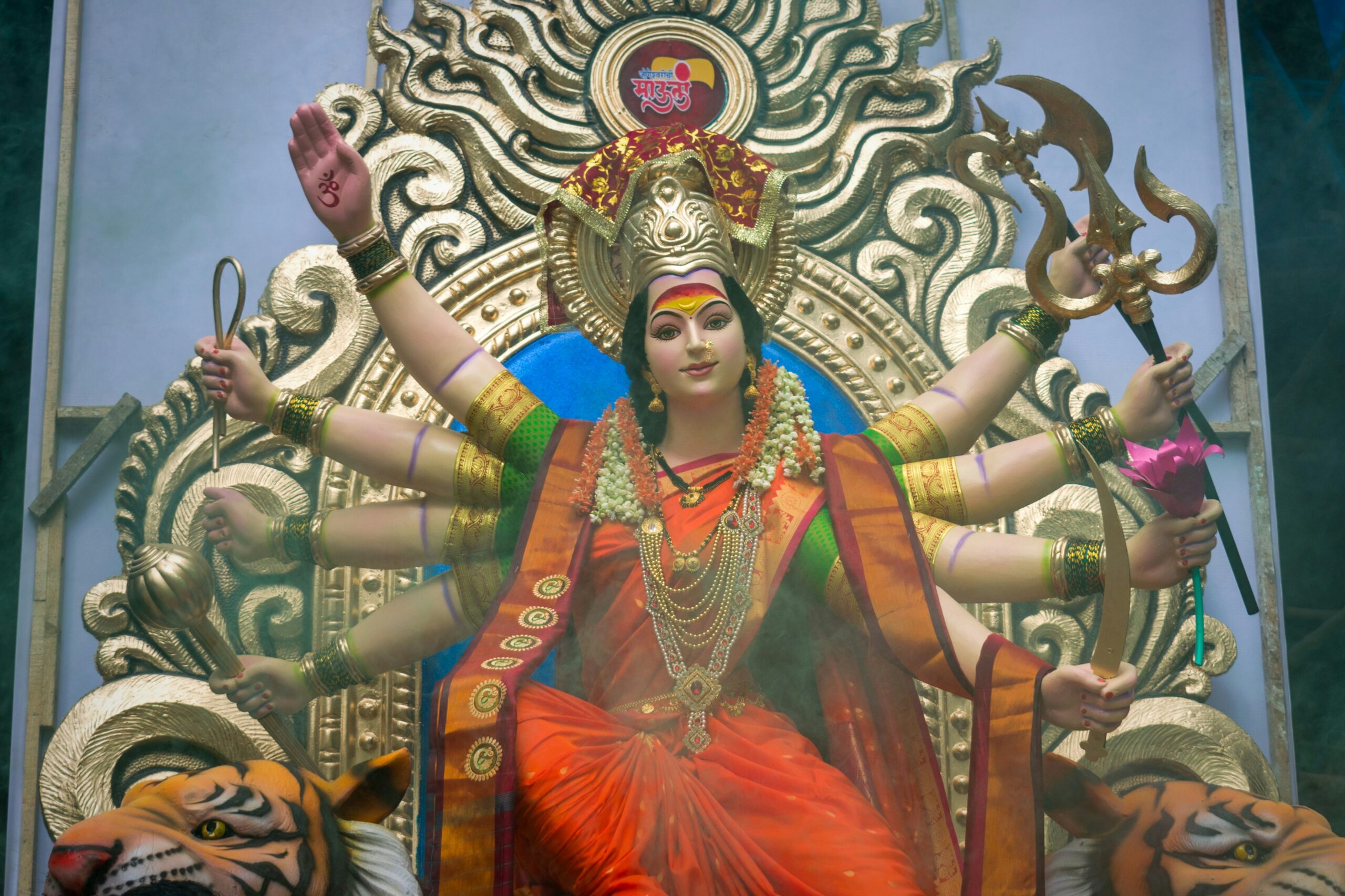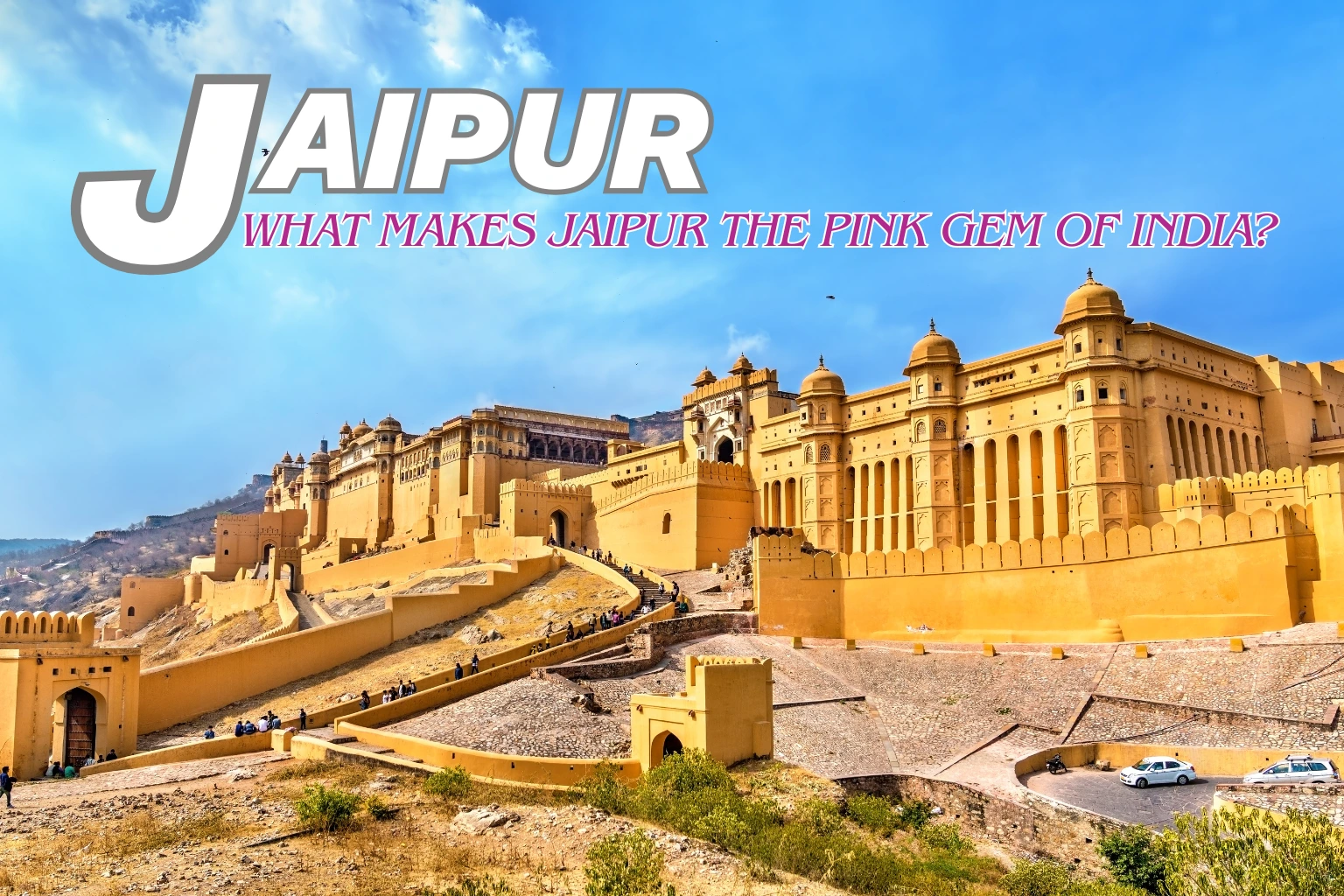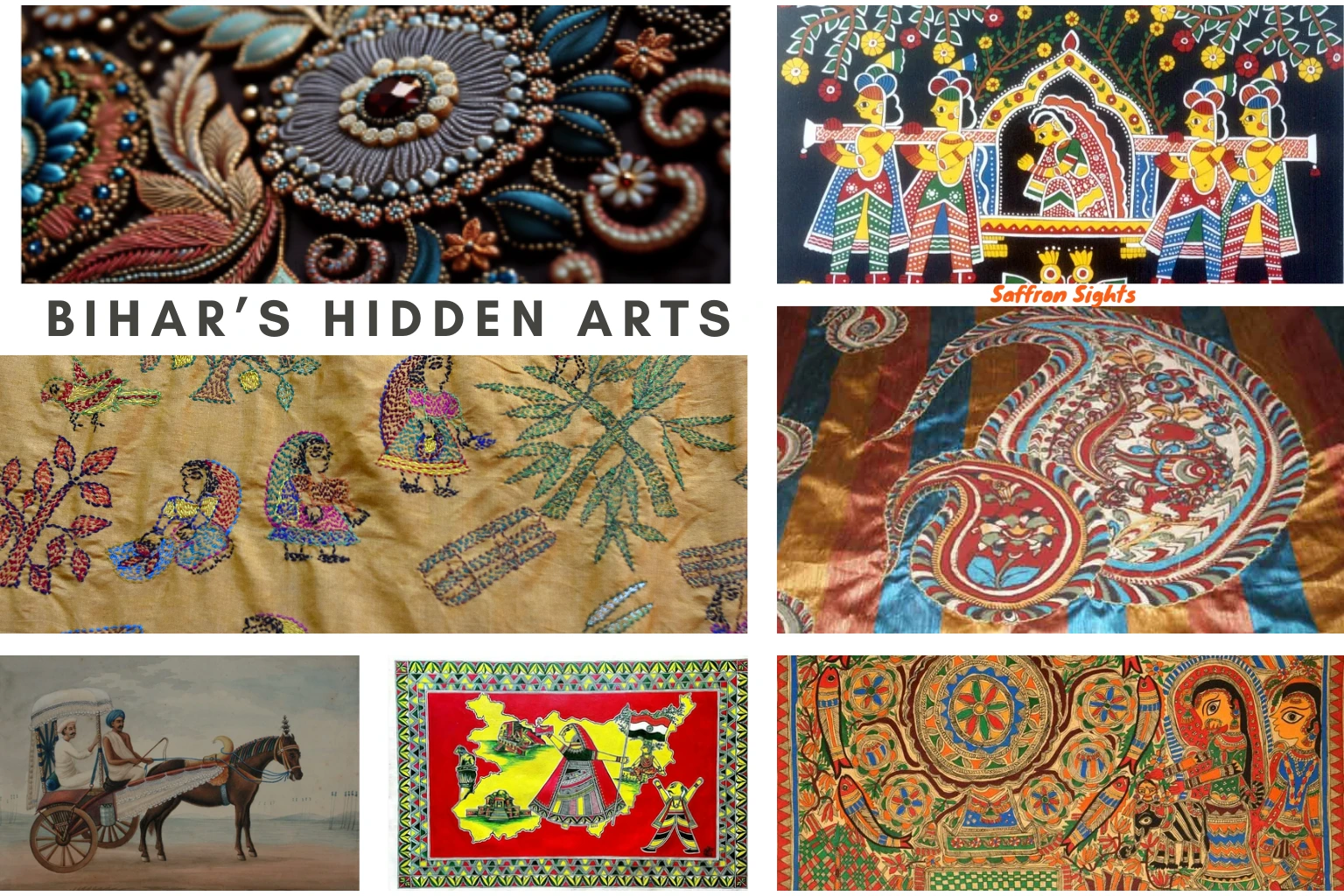Introduction to Mithila Culture
Mithila culture, located in the northeastern region of Bihar, India, is a vibrant and historically rich cultural landscape that has attracted the attention of scholars, artists, and tourists alike. This area, historically referred to as Mithila or Tirhut, is renowned for its distinctive traditions, art forms, and societal practices. The cultural roots of Mithila can be traced back to ancient times, with references in texts such as the Ramayana and the Mahabharata, suggesting the region has been a pivotal center of political and spiritual significance.
The geographical context of Mithila is essential to understanding its culture. The region is primarily embraced by the Mithilanchal, which comprises several districts in Bihar. It is characterized by a unique topography of rivers, fertile plains, and historical monuments, all contributing to its cultural richness. The presence of the Koshi River and several other water bodies has played a vital role in shaping the agrarian traditions that dominate this region. As a result, agriculture has not only served as an economic base but also as a foundation for various social customs and festivals unique to Mithila.
Mithila culture is marked by a myriad of traditions, especially evident in its art forms. The well-known Madhubani paintings exemplify the creativity and spiritual depth of Mithila’s artistic expression. These intricate art forms often reflect themes from mythology, nature, and everyday life, making them not just decorative pieces, but also carriers of cultural stories. Moreover, social customs such as marriage rituals and festivals further distinguish this region, showcasing a blend of love, reverence, and community bonding. Overall, Mithila stands as a unique cultural entity, encapsulating a fascinating blend of history, tradition, and artistic expression.
Historical Background of Mithila
Mithila, a region located in the northern part of Bihar, India, possesses a rich historical tapestry that is deeply interwoven with the broader narrative of Indian culture. The origins of Mithila culture can be traced back to ancient texts such as the Manusmriti and the Ramayana, which mention the kingdom of Mithila as a significant center of learning and spirituality. It is particularly renowned as the birthplace of Sita, the beloved wife of Lord Rama, further solidifying its importance in Hindu mythology.
Throughout history, Mithila witnessed the rise and fall of several influential dynasties. One of the most notable was the Mithila kingdom, which thrived under the rule of the Licchavi dynasty during the early centuries A.D. The Licchavis were known for their patronage of education and the arts, contributing to the flourishing of literature, philosophy, and intricate craftsmanship that characterized early Mithila society. During this era, Mithila became a hub for scholars and poets, gaining recognition for producing significant literary works.
In subsequent centuries, the region came under the influence of the Maithil Brahmins, who played a crucial role in maintaining and propagating the distinctive cultural practices of the area. They contributed to preserving various rituals, traditions, and artistic forms prevalent in Mithila. The influx of other dynasties, such as the Kachhwaha and the Thakurs, introduced new cultural nuances while still respecting and integrating existing Mithila traditions.
The impact of colonial rule during the British period also shaped Mithila culture significantly. Traditional crafts, such as the famous Madhubani paintings, gained prominence during this time, drawing attention from art lovers and scholars alike. Overall, the historical background of Mithila reveals a dynamic interplay of cultural, social, and political forces that have collectively influenced the region’s identity. As we explore further, we will see how these historical foundations continue to inform the cultural practices and beliefs of the Mithila community today.
The Art and Craft of Mithila
The art of Mithila, also known as Madhubani art, has its roots deeply embedded in the cultural fabric of Bihar, India. This traditional form of painting can be traced back to ancient times, originating in the Mithila region and initially practiced by women to adorn the walls of their homes during festivals and special occasions. These paintings, characterized by their intricate patterns, vibrant colors, and natural motifs, depict various themes including mythology, nature, and daily life. The meticulous techniques employed in creating these artworks often involve natural pigments and substances sourced from the local environment, such as plant dyes and rice paste.
Over the centuries, Mithila painting has evolved, incorporating various styles and methods while remaining true to its cultural significance. Traditionally executed on mud walls, contemporary artists now apply these techniques on paper, cloth, and canvas, which has broadened the scope of their work and allowed for commercial viability. Artists are increasingly exploring modern narratives while retaining the essence of Mithila, thus creating a dialogue between tradition and innovation. This adaptation has not only helped preserve this unique art form but also has garnered global attention, leading to exhibitions and recognition in international art circles.
The role of Mithila art in shaping cultural identity cannot be overstated. It serves as a visual language through which the community expresses its socio-political realities, beliefs, and values. The growing interest from the global community has opened up new markets for these artists, facilitating a blend of traditional and contemporary mediums. As a result, Mithila art continues to thrive, presenting a rich tapestry of both heritage and modern creativity that speaks to the resilience and adaptability of the culture it represents.
Mithila Cuisine: A Feast of Flavors
The culinary traditions of Mithila, a region in Bihar, reflect its rich cultural heritage and deep-rooted agricultural practices. At the heart of Mithila cuisine are staple foods such as rice, lentils, and various types of vegetables. The predominant use of seasonal vegetables works harmoniously with the climatic conditions, making sustainability a key component of their culinary practices. Mithila households often incorporate fresh, locally sourced ingredients, which not only support local farmers but also foster a connection between the community and their environment.
Traditional Mithila dishes are an epitome of flavor and diversity. One of the most cherished dishes is ‘Sattu,’ a flour made from roasted gram, which is often prepared as porridge or stuffed into parathas. Another popular dish is ‘Daal Pitha,’ which consists of rice dumplings filled with spiced lentils and served with a variety of chutneys. Festivals play a significant role in shaping the culinary landscape of Mithila culture. For instance, during Chhath, an important festival dedicated to the Sun God, devotees often prepare special offerings, including ‘Thekua,’ a sweet made from wheat flour and jaggery, highlighting the region’s dedication to traditional cooking practices.
Cooking methods in Mithila also contribute to a unique gastronomic experience. Traditional wood-fired stoves are commonly used, which impart a distinct smoky flavor to the dishes. Many families still practice ancestral recipes passed down through generations, ensuring that the essence of Mithila cuisine is preserved. The interplay of flavors and techniques used in these recipes is a testament to the region’s vibrant culinary narrative. In essence, Mithila cuisine is not just about food; it is an integral part of the cultural identity that brings people together during celebrations and everyday meals.
Festivals and Celebrations in Mithila
Mithila, a region renowned for its vibrant culture, hosts a plethora of festivals that reflect its rich heritage and traditions. These festivals not only signify spiritual beliefs but also serve as a means of community bonding and the preservation of customs. One of the most prominent festivals celebrated in Mithila is Chhath, dedicated to the Sun God, Surya. This festival usually occurs in the month of Kartik and involves rigorous rituals where devotees fast and offer prayers, showcasing their devotion and gratitude. The community actively participates in the preparation of offerings, and the collective spirit fosters unity among the participants.
Another significant celebration in Mithila is Sama Chakeva, which symbolises the bond between brothers and sisters. The festival is observed during the month of November, and it is marked by the creation of intricate clay idols representing birds, which are then worshipped. The rituals conducted during Sama Chakeva not only highlight familial love but also emphasize themes of gratitude and care within the community. The festival encapsulates the values of respect and connection prevalent in Mithila culture, reinforcing the importance of family ties.
Moreover, festivals like Holi and Diwali are celebrated with great enthusiasm, reflecting the aesthetic vibrancy of the Mithila region. Holi, the festival of colors, sees people engage in revelry, symbolizing the victory of good over evil and the onset of spring. Diwali, on the other hand, illuminates the significance of light over darkness and is marked by the decoration of homes and communal festivities. Both these festivals are characterized by the participation of various community members, highlighting the integration of tradition and contemporary social interactions.
In conclusion, the festivals of Mithila serve as a testament to the region’s rich cultural fabric, encapsulating values of unity, family bonding, and gratitude. They not only promote cultural continuity but also strengthen the communal identity, making Mithila’s celebrations a vital aspect of its heritage.
The Role of Folklore and Literature
Mithila, a region in Bihar, is renowned for its vibrant folklore and literary traditions that have been pivotal in shaping its cultural identity. The rich oral traditions of Mithila encapsulate a plethora of folk tales, poems, and narratives that mirror the values, beliefs, and practices of its people. These stories often revolve around themes of love, morality, nature, and the struggles of everyday life, thus reflecting the social fabric of the community.
A significant literary figure in Mithila is the celebrated poet Vidyapati, who lived during the 14th century. His compositions, primarily in the Maithili language, explore themes of devotion, romance, and social issues, resonating with the heart of Mithila’s cultural ethos. Vidyapati’s works, characterized by their lyrical beauty, laid the foundation for subsequent generations of writers and poets in the region. Various themes inherent in Maithili literature—such as the celebration of women’s roles and the expression of emotional depth—continue to influence contemporary authors and artists.
The narratives passed down through generations serve not only as entertainment but also as a means of cultural preservation. They convey moral lessons and reinforce community values, teaching younger generations about their heritage and identity. Folk tales often feature deities, local heroes, and mythical creatures, allowing listeners to connect with their past and heritage. Moreover, these stories serve to foster a sense of belonging among the people of Mithila, underlining the importance of community ties and shared experiences.
In conclusion, the folklore and literature of Mithila profoundly impact the cultural identity of the region. Through tales that are rich in themes and values, these traditions reinforce a sense of belonging and continuity among the people, ensuring that Mithila’s rich heritage is cherished and communicated from one generation to the next.
Traditional Attire and Jewelry
The traditional attire of the Mithila people reflects their rich cultural heritage and identity, showcasing a unique blend of artistry and symbolism. The most common garments worn by women include the saree, often styled in a distinctive manner, complemented by a long blouse known as the choli. Mithila sarees are renowned for their vibrant colors and intricate patterns, which often depict elements of nature and mythological themes, representing the region’s deep-seated beliefs and traditions. The hues worn are not merely for aesthetic purposes; each color carries its own significance, often associated with festivals or social status.
Men typically don a dhoti paired with a kurta or a simple shirt. The dhoti, a traditional garment comprising a length of cloth tied around the waist, is usually made from cotton, making it suitable for the climate of Bihar. The colors worn by men are typically more subdued than those of women, yet they hold their own symbolic meaning, often indicating community ties or specific occasions.
Jewelry plays a central role in the Mithila culture, serving as both an adornment and a marker of identity. Women wear an array of items such as necklaces, earrings, bangles, and nose rings, often crafted from gold or silver and embellished with intricate designs. The jewelry not only enhances their attire but also signifies marital status and social class. On special occasions, such as weddings and festivals, the adornment becomes even more elaborate, showcasing the family’s affluence and the cultural importance placed on such events.
The intertwining of clothing and jewelry within Mithila culture illustrates a profound connection to their cultural identity, with each piece of attire or ornament telling a story of heritage, tradition, and individuality. As such, the traditional garments and adornments of the Mithila people are more than mere clothing; they are expressions of a rich cultural legacy that has been preserved through generations.
Impact of Modernization on Mithila Culture
The passage of time and the forces of modernization have profoundly influenced Mithila culture, an integral part of Bihar’s rich heritage. As urbanization continues to reshape the socio-economic landscape, traditional practices are facing numerous challenges. The once vibrant and distinct Mithila art forms, especially painting and handicrafts, confront competition from mass-produced goods and changing consumer preferences. This shift poses a risk to the authenticity and sustainability of these cultural expressions, as artisans grapple with maintaining their traditional techniques amidst increasing pressures to conform to contemporary market demands.
Moreover, the younger generation in Mithila is increasingly drawn toward urban lifestyles, leading to a gradual decline in the transmission of traditional practices. Education trends and the allure of modern careers often dissuade youth from pursuing artistic vocations tied to their cultural roots. This generational shift raises concerns about the preservation of Mithila’s rich traditions, as skill sets that have been passed down through families for centuries risk being lost if not actively nurtured.
Ultimately, the path of Mithila culture amidst modernization is marked by both challenges and opportunities. The community’s efforts to adapt while honoring its heritage demonstrate resilience and a commitment to ensuring that Mithila culture continues to thrive in the face of change.
Conclusion: Preserving the Essence of Mithila Culture
The preservation of Mithila culture holds profound significance in an era characterized by rapid changes and modern influences. This vibrant culture, with its unique artistic expressions, traditional beliefs, and communal lifestyle, faces numerous challenges as globalization continues to reshape societal norms and practices. However, active efforts by local communities, cultural organizations, and government initiatives are fundamental to ensuring that the rich heritage of Mithila remains intact for future generations.
In Mithila, the local communities have taken a proactive stance in preserving their cultural legacy. This includes organized workshops aimed at educating younger generations about traditional art forms, such as Madhubani painting and music, which are integral to the Mithila identity. These grassroots movements are essential in fostering a sense of pride and awareness, while also ensuring that ancestral skills are not forgotten. Additionally, festivals and cultural events are regularly celebrated to celebrate and showcase Mithila traditions, thereby reinforcing communal bonds.
Moreover, cultural organizations play a pivotal role in promoting Mithila heritage beyond regional boundaries. By collaborating with artists and artisans, they create sustainable platforms for showcasing traditional crafts, enabling local artisans to reach broader markets. This not only provides economic opportunities but also elevates the visibility of Mithila culture in the global landscape. Digital platforms and social media are increasingly being harnessed to share stories, artworks, and cultural narratives, allowing for an expansive audience to appreciate and support Mithila.
As a call to action, readers are encouraged to engage with and promote Mithila culture in various forms. This can be achieved through supporting local artisans, participating in cultural events, or simply sharing knowledge about this remarkable heritage. By actively contributing to the preservation of Mithila culture, individuals can play an essential role in safeguarding this rich tapestry of history for future generations, ensuring that the essence of Mithila continues to thrive amidst the modern world.




